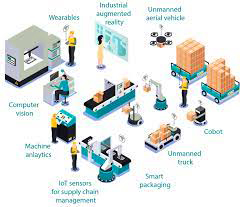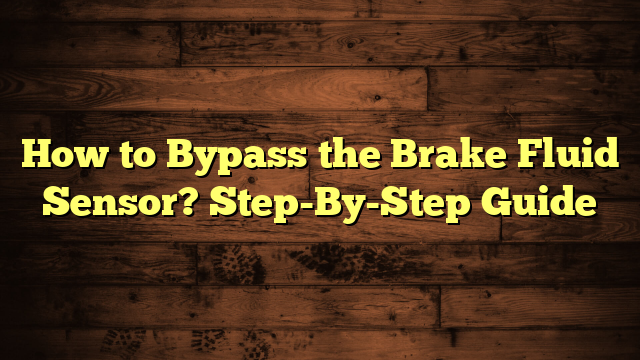Tire Pressure Sensor Fault F150; Causes Diagnosing and Troubleshooting
Experiencing a ‘Tire Pressure Sensor Fault’ in your Ford F-150? This common issue can lead to inaccurate tire pressure readings and a persistent warning light. In this guide, we’ll explore the potential causes behind this fault, provide diagnostic steps to pinpoint the problem, and offer troubleshooting tips to get your TPMS back in optimal working condition. Say goodbye to that pesky warning light!
Table of Contents
What is the tire pressure warning on a Ford F150?

A Ford F-150 Tire Pressure Sensor Fault indicates a problem with the Tire Pressure Monitoring System (TPMS). This system monitors tire pressure and alerts drivers to issues. Common causes include dead sensor batteries, signal interference, sensor damage, or relearning after tire replacement.
This fault can lead to inaccurate tire pressure readings and a warning light on the dashboard. Drivers should check tire pressures, reset the TPMS if necessary, and seek professional diagnosis for sensor replacement if the problem persists. Regular maintenance, avoiding tire damage, and checking for signal interference can help prevent TPMS faults.
Where is Ford F150 tire pressure sensor?
In a Ford F-150, the tire pressure sensors are typically located inside each tire, mounted on the wheel rim. These sensors are part of the Tire Pressure Monitoring System (TPMS) and are responsible for continuously monitoring the air pressure in each tire. Each tire has one sensor, including the spare tire if your vehicle is equipped with TPMS for the spare.
The specific location of each sensor is within the tire, attached to the wheel assembly. The tire must be removed from the wheel rim to access and service these sensors. If you’re looking to replace or service a tire pressure sensor, it’s advisable to consult your vehicle’s manual or seek assistance from a qualified technician, as the process can vary depending on the F-150’s model year and trim level.
What causes F150 tire pressure sensor problems?

Tire pressure sensor problems in Ford F-150s can be attributed to several factors, each with its own specific causes:
- Dead Batteries:
- Cause: Tire pressure sensors are equipped with internal batteries that power their operation. Over time, these batteries naturally degrade and can die, preventing the sensor from transmitting data.
- Symptoms: A dead sensor battery leads to a loss of communication with the vehicle’s computer, triggering a TPMS fault warning.
- Solution: Replacing the sensor with a new one is often necessary when the battery is depleted.
- Signal Interference:
- Cause: TPMS sensors communicate with the vehicle’s computer using radio waves. Interference from electronic devices like radar detectors or poorly shielded phone chargers can disrupt these signals.
- Symptoms: Signal interference can lead to inconsistent or inaccurate readings and trigger TPMS warnings.
- Solution: Identify and remove the source of interference or switch to TPMS-friendly electronic accessories.
- Sensor Damage:
- Cause: Physical damage to the tire pressure sensors can occur from hitting curbs, potholes, or other road hazards.
- Symptoms: Damaged sensors may no longer function correctly, resulting in erroneous pressure readings and TPMS faults.
- Solution: When physically damaged, sensors should be replaced with new ones.
- Relearning Issues:
- Cause: After tire replacement or sensor replacement, the vehicle’s computer may not automatically recognize the new sensors, requiring a relearning process.
- Symptoms: Failure to relearn the sensors can lead to incorrect readings and TPMS warnings.
- Solution: Follow the manufacturer’s relearn procedure specified in the owner’s manual or use a TPMS relearn tool to sync the new sensors with the vehicle’s computer.
Addressing these underlying causes is crucial for resolving tire pressure sensor problems in Ford F-150s and ensuring accurate tire pressure monitoring for safety and performance.
Jeep Grand Cherokee Tire Pressure Sensor Problems; By Sensor Guides
Sensor guides
How to fix your tire pressure sensor fault in F150?
Fixing a tire pressure sensor fault in a Ford F-150 typically involves several steps to diagnose and address the issue. Here’s a comprehensive guide to help you resolve this problem:
Diagnosis:
- Check Tire Pressures: Start by manually checking the tire pressures in all four tires, including the spare tire. Ensure they are inflated to the recommended levels, as indicated in your vehicle’s manual or on the driver’s side door jamb.
- Inspect for Damage: Visually inspect each tire for any signs of damage, such as punctures, cuts, or visible wear.
- TPMS Reset: Attempt to reset the TPMS system using the reset button or procedure specified in your owner’s manual. Often, this can resolve minor sensor faults.
- Check for Obstructions: Ensure that there are no obstructions, such as mud, snow, or debris, obstructing the sensors or the valve stems.
If the fault persists:
- Use a TPMS Diagnostic Tool: If the TPMS fault persists, use a TPMS diagnostic tool to identify the specific sensor causing the fault. These tools can provide information about which sensor is malfunctioning.
- Replace Faulty Sensor: Once you identify the faulty sensor, replace it with a new one. Ensure that the replacement sensor is compatible with your Ford F-150.
How do we reset the Ford F150 tire pressure sensor fault?
To reset a Ford F-150’s Tire Pressure Sensor Fault, follow these steps:
- Ignition On: Turn the ignition key to ON (do not start the engine).
- Locate the TPMS Reset Button: Look for the TPMS reset button, typically located under the steering wheel or in the glove box.
- Press and Hold: Press and hold the TPMS reset button for about 3-5 seconds. You may need to consult your vehicle’s manual for the exact location of the reset button, as it can vary by model year.
- Release Button: After holding the button, release it.
- Wait for Blinking Light: Watch for the TPMS light on the dashboard. It should blink three times to indicate that the reset process is complete.
- Start the Engine: Start the vehicle’s engine.
- Drive: Drive the vehicle for at least 10 minutes to allow the TPMS system to recalibrate.
After following these steps, the Tire Pressure Sensor Fault message should clear, and the TPMS system should be reset. If the message persists or the TPMS light continues to illuminate, it may indicate a more significant issue with the sensors or the system itself. In such cases, it’s advisable to have the TPMS sensors diagnosed and repaired by a qualified technician or at a Ford dealership.
Ford F150 tire pressure sensor replacement procedure
Replacing a tire pressure sensor on a Ford F-150 involves several steps. Here is a general procedure to guide you through the process:
Tools and Materials You’ll Need:
- New tire pressure sensor (compatible with your F-150)
- Valve core removal tool
- Torque wrench
- Jack and jack stands
- Lug wrench
- TPMS relearn/reset tool (if required)
Procedure:
- Safety Precautions:
- Ensure your vehicle is parked on a level surface and the parking brake is engaged.
- Put on safety gear, including gloves and eye protection.
- Prepare the Vehicle:
- Loosen the lug nuts on the wheel that houses the sensor but do not remove them yet.
- Use a jack to lift the vehicle off the ground, and place it securely on jack stands.
- Remove the Wheel:
- Finish removing the loosened lug nuts and carefully take off the wheel. Place it aside.
- Locate the TPMS Sensor:
- The TPMS sensor is mounted on the inside of the wheel, near the valve stem.
- Deflate the Tire:
- Use a valve core removal tool to carefully deflate the tire. Be cautious not to damage the sensor during this process.
- Remove the Sensor:
- Use a suitable tool to remove the sensor from the valve stem. Sometimes, it may require a bit of force, so be gentle but firm.
- Install the New Sensor:
- Attach the new TPMS sensor to the valve stem.
- Tighten it securely using the torque wrench, following the manufacturer’s recommended torque specifications.
- Inflate the Tire:
- Inflate the tire to the recommended pressure, as specified in your vehicle’s manual or on the driver’s side door jamb.
- Reattach the Wheel:
- Carefully place the wheel back onto the wheel hub.
- Hand-tighten the lug nuts onto the wheel’s bolts.
- Lower the Vehicle:
- Use the jack to lower the vehicle back to the ground.
- Tighten Lug Nuts:
- Using a crisscross pattern, torque the lug nuts to the manufacturer’s specifications using a torque wrench.
- Reset the TPMS System:
- Some vehicles require a TPMS reset or relearn procedure to recognize the new sensor. Consult your vehicle’s manual for the specific procedure or use a TPMS reset tool.
- Test the TPMS:
- Start the vehicle and check if the TPMS warning light on the dashboard goes off, indicating that the system recognizes the new sensor.
- Repeat for Other Sensors:
- If you’re replacing multiple sensors, repeat the above steps for each one.
- Final Check:
- Double-check the tire pressure on all four tires, ensuring they are at the recommended levels.
- Recheck Tightness:
- Recheck the lug nuts after driving a short distance to ensure they are properly tightened.
Please note that the specific procedure and tools required may vary depending on your F-150’s model year and trim level. Always consult your vehicle’s manual for precise instructions and torque specifications. If you’re unsure or uncomfortable performing this task, consider seeking assistance from a qualified mechanic or tire service professional.
Kia K5 Tire Pressure Sensor Reset Procedure
sensor guides







One Comment